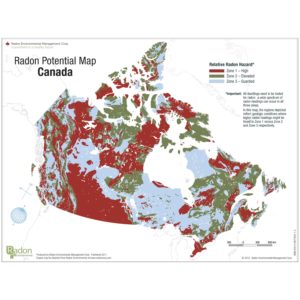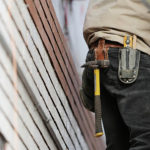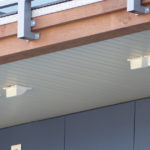 A home’s first line of defence for indoor air quality (IAQ) is a good ventilation and HVAC system that uses high-quality vents and wall caps. Homeowners should also be aware of the threats to their IAQ. One threat that laces awareness is radon. As we head into winter, it’s a topic all building professionals should be thinking about.
A home’s first line of defence for indoor air quality (IAQ) is a good ventilation and HVAC system that uses high-quality vents and wall caps. Homeowners should also be aware of the threats to their IAQ. One threat that laces awareness is radon. As we head into winter, it’s a topic all building professionals should be thinking about.
November is Radon Action Month in Canada; in the United States, it is in January. Winter is the best time for your customers to test their homes and other buildings for radon.
Radon is a naturally occurring radioactive gas that is caused by the breakdown of uranium.
Uranium is found in all soil and rock but is more common in some regions than others.
Fortunately, maps showing the concentration of radon are available for the United States and Canada.
Your customers will not be able to smell or see radon, but they need to test their homes because the risks radon poses are significant. The U.S. Environmental Protection Agency (EPA) estimates that 21,000 Americans die of lung cancer every year as a result of exposure to radon. Radon exposure is second only to smoking in causing lung cancer, and for people who have never smoked, it is the number one cause of lung cancer.
Radon’s entry into buildings is helped along by a process known as the stack effect. When there is a significant difference between indoor and outdoor temperatures, as is often the case in the winter, the air pressure inside the home increases. This creates an effect that pushes air upward and pulls it from the soil below the house.
In areas where the ground freezes, there is a greater risk of high concentrations of radon. This is because the gas gets trapped beneath the frozen surface and goes where it can escape, which is from the unfrozen ground beneath a heated building.
Also, radon exposure risk increases in the winter because your customers spend more time indoors breathing potentially infected air.
Points of entry for radon include:
• Pores and cracks in concrete foundations and slabs
• Behind brick veneer walls that rest on block foundations
• Joints between floors and walls
• Exposed soil in crawlspaces
• Drain tiles
• Pipe entries
• Open tops of block walls
Radon can also find its way into your customers’ homes through well water or building materials such as brick, concrete or rock. But the most common source of radon is the soil beneath.
Testing should be done in the winter, and it should be done over time. Health Canada recommends regularly testing throughout a three-month period. A good schedule to consider is to start testing at the beginning of December and to test through to the end of February. This way your customers will get a reading during the most high-risk period. There are many devices on the market that your customers can use to test radon levels in their home.
What is it they are looking for? According to Health Canada levels above 200 Becquerels per cubic metre (Bq/m3) should be attended to within two years and homes with levels above 600 Bq/m3 within one year. This guideline comes with a disclaimer:
“While the health risk from radon exposure below the Canadian Guideline is small there is no level that is considered risk free. It is the choice of each homeowner to decide what level of radon exposure they are willing to accept.”
In the U.S., the EPA recommends fixing the home when radon levels exceed four picocuries per liter (pCi/L).
The good news is that if your customers do find unacceptable levels of radon in their homes, mitigation is possible and not prohibitively expensive. For low levels below the thresholds identified by Health Canada or the EPA, a good ventilation system is a feasible option. For higher levels, your customers should hire a certified radon mitigation contractor.



